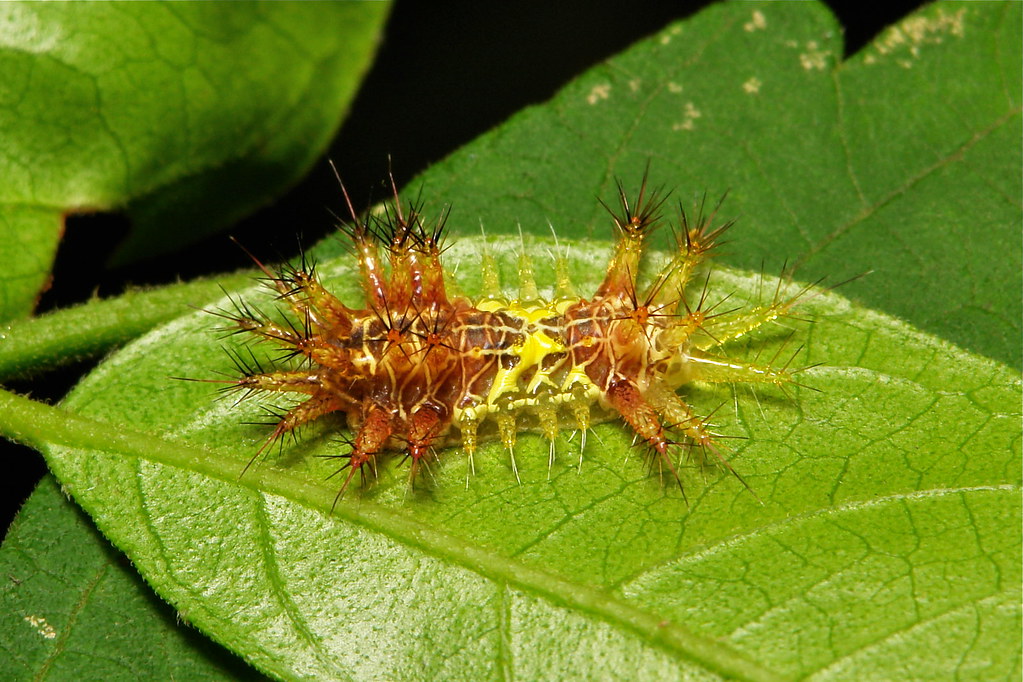
Stinging Nettle Slug Caterpillar (Cup Moth, Darna sp., Lim… Flickr
This footage shows the Stinging Nettle Slug Caterpillar of a Cup Moth, family Limacodidae., about 10 mm in size. It is nice to watch but very painful to touc.

Stinging Nettle Slug Caterpillar (Cup Moth, Susica sinensis, Limacodidae) "Torpedo" a photo on
1 Remove the caterpillar without touching it. If the caterpillar is still on your skin, use pliers, tweezers, or thick gloves to pick up the caterpillar and remove it. Never try to remove the caterpillar with your bare hands because it can sting you again. [1] Caterpillar stings come from their tiny spines that look like hairs.

Stinging Nettle Slug Caterpillar (Cup Moth, Limacodidae) "… Flickr
Cup Moth larvae are often highly ornamented and brightly colored. Two main types can be distinguished: larvae armed with rows of protuberances bearing stinging spines called nettle caterpillars, or non-spined forms where the surface of the larvae may by completely smooth, called gelatin caterpillars.
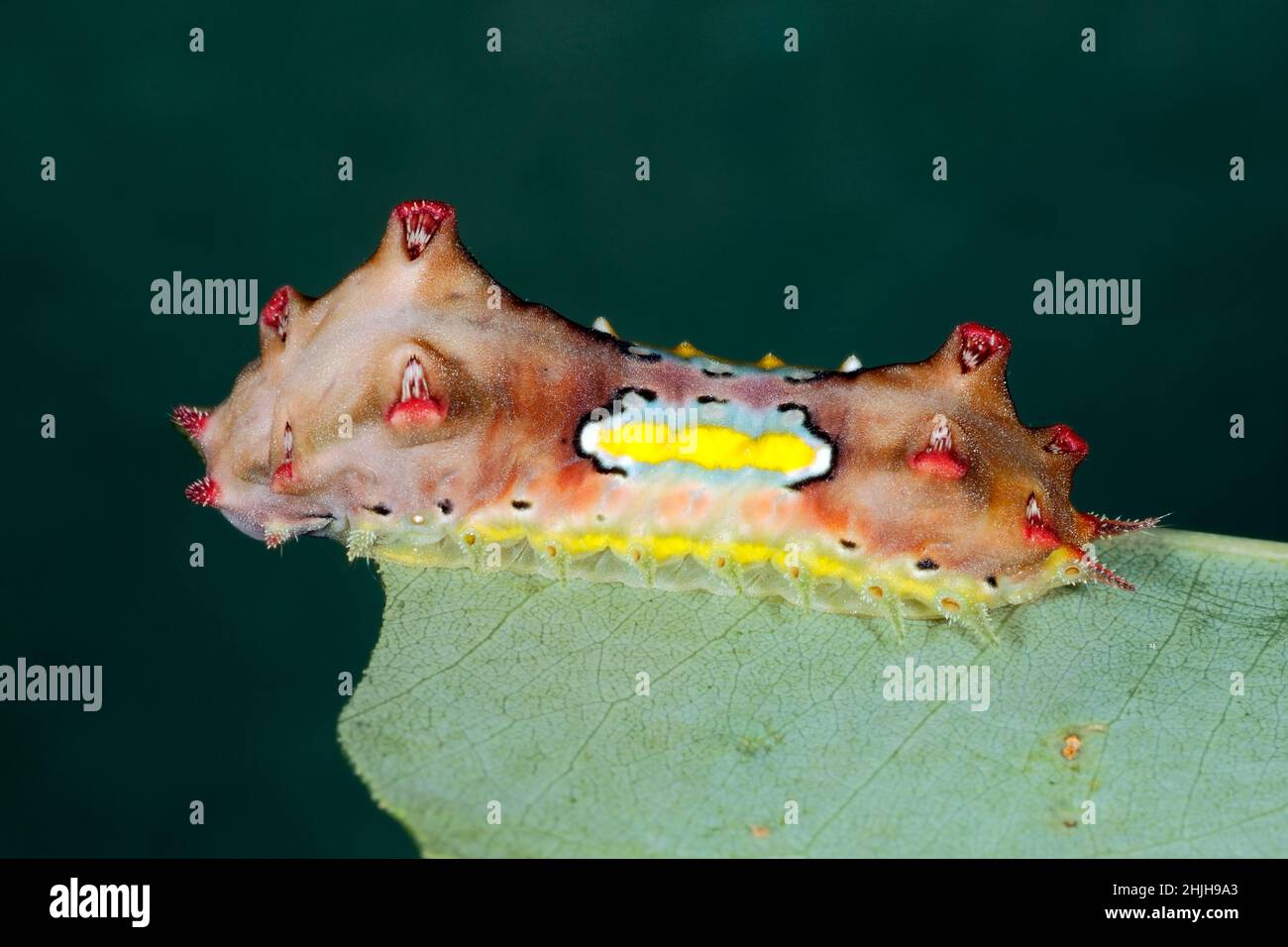
Mottled Cup Moth caterpillar, Doratifera vulnerans. These caterpillars have stinging spines that
The mottled cup moth caterpillars have bright warning colours to advertise their venom to predators: they are typically green, red or brown in appearance. The venoms used by animals as.

Stinging Nettle Slug Caterpillar (Cup Moth, Limacodidae) "… Flickr
Several techniques may soothe the pain and burning caused by puss moth caterpillar stings. Washing the sting with soap and water and using a hair dryer set on low to dry the area. Putting tape on the site and pulling it off to remove embedded hairs to prevent further injury. Applying isopropyl alcohol (rubbing alcohol) to the sting.
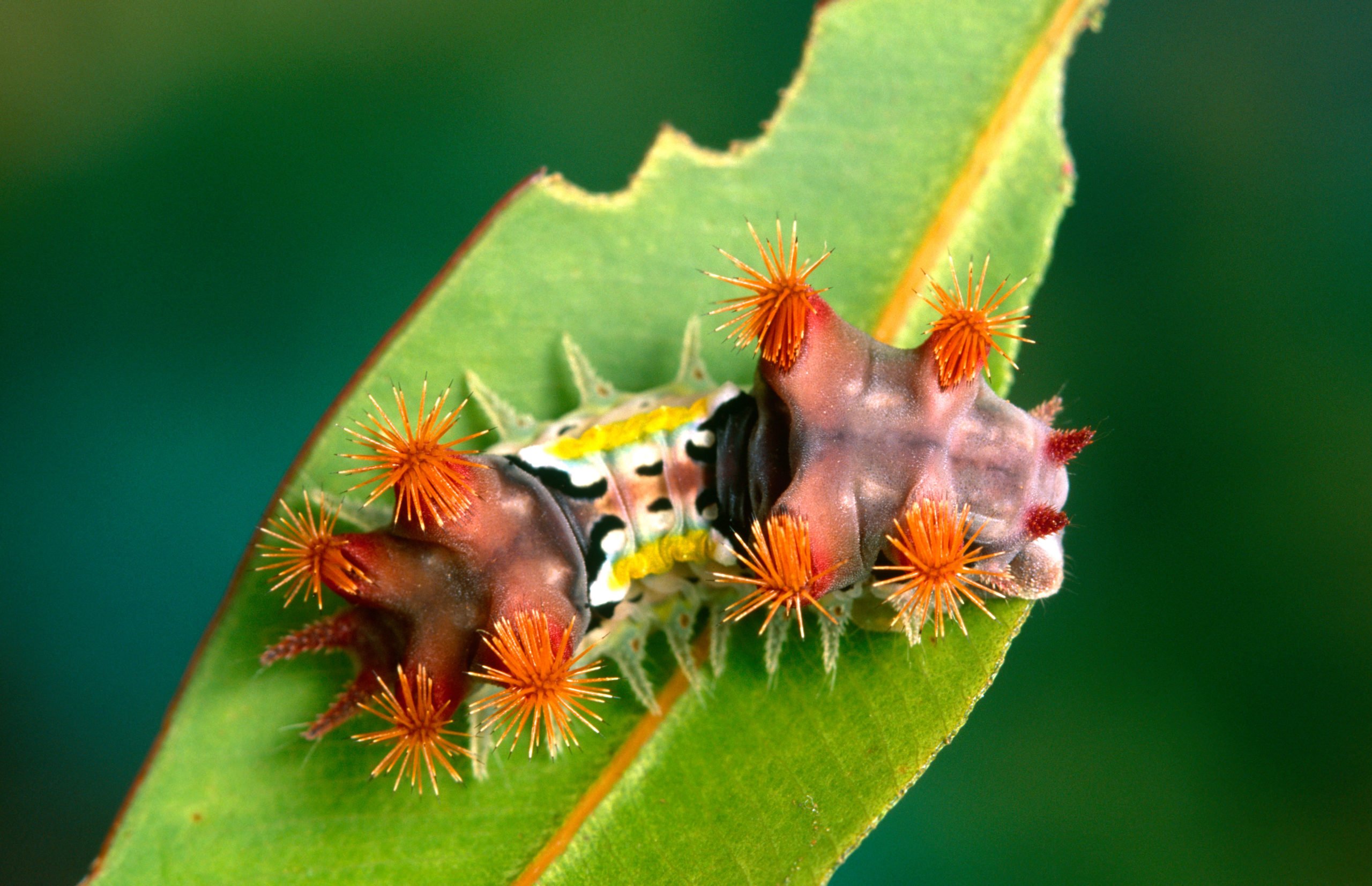
Meet the venomous mottled cup moth caterpillar Australian Geographic
The Four-spotted Cup Moth (Doratifera quadriguttata) caterpillar is a colourful insect, with a pale green body, with black, yellow and white patterns and colours on the top.There are eight pale coloured spikes on the each side, whilst at the front and end there are a pair of red spikes. On the top of thorax section, there are four hidden red spikes, that will erect with stinging hairs when.

Stinging Nettle Slug Caterpillar (Cup Moth, Limacodidae) "… Flickr
This caterpillar not only eats leaves on trees and shrubs, but it is a member of a small group of caterpillars whose skin is covered with stinging spines attached to venom glands, which if they touch your skin can cause a nasty rash and deliver a terrible sting inducing immediate pain, severe itching, swelling, and redness.
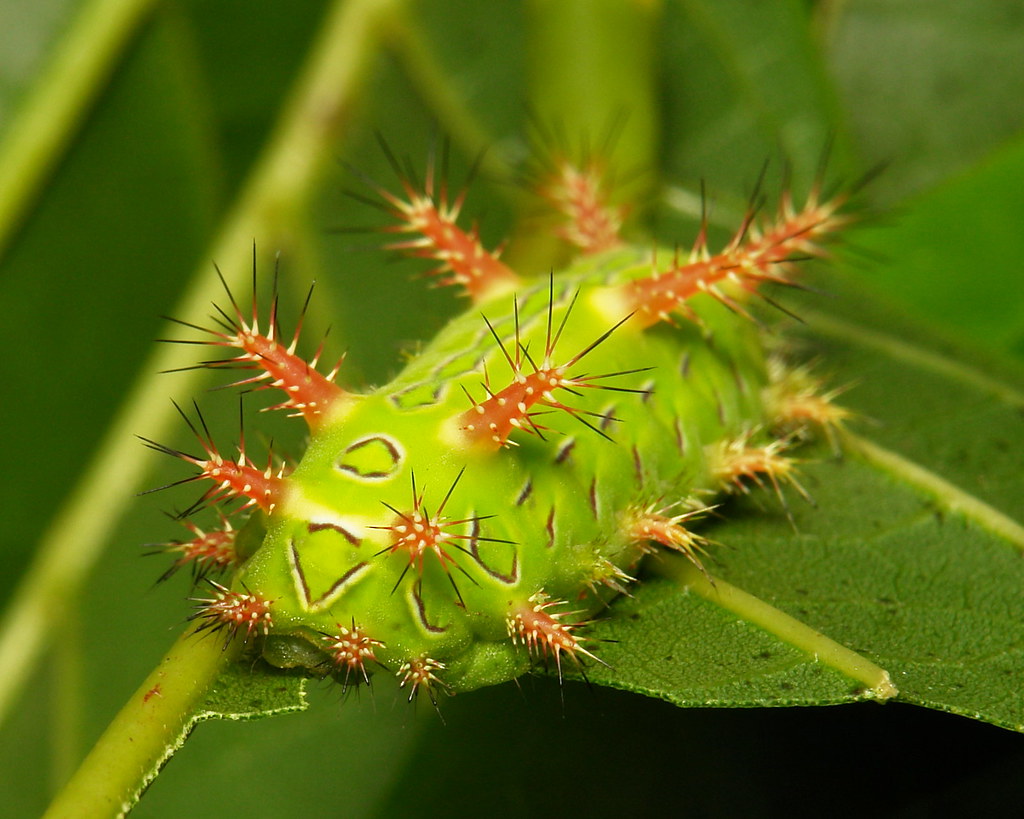
Stinging Nettle Slug Caterpillar (Cup Moth, Phlossa sp., L… Flickr
Doratifera vulnerans, commonly known as the mottled cup moth, Australian cup moth or Chinese Junk (referring to its caterpillar), is a species of cup moth of the family Limacodidae. [1] The species was first described by John Lewin in 1805 and is the type species of the genus Doratifera. [2] It is found in Australia.

Stinging Nettle Slug Caterpillar (Cup Moth, Limacodidae) "… Flickr
In Australia, the family is known as the Cup Moth family and the caterpillars, many of which can sting, are called Spitfires according to the Brisbane Insect website. Your particular caterpillar is the Mottled Cup Moth, Doratifera vulnerans, and the caterpillar, according to the Brisbane Insect Website , is called a Chinese Junk: "because of.

Stinging Nettle Slug Caterpillar (Cup Moth, Phlossa sp., L… Flickr
Cup moths are Australian insects that feed on eucalyptus foliage. Voracious feeders, a single cup moth caterpillar can make short work of an entire eucalyptus leaf, and a severe infestation can defoliate a tree. The tree generally recovers unless this happens several years in a row.

Stinging Nettle Slug Caterpillar (Cup Moth, Mahanta sp., L… Flickr
The adult moth has a dark brown body with light brown, mottled wings that are about 4 cm across. The Painted Cup Moth Doratifera oxleyi is common in central New South Wales and its caterpillars may be found in great numbers feeding on the leaves of the Red Gum (Eucalyptus camaldulensis). The caterpillars are green, with a skirt of fleshy spikes.

Stinging Nettle Slug Caterpillar (Cup Moth, Griseothosea s… Flickr
Cup Moth larvae are often highly ornamented and brightly colored. Two main types can be distinguished: larvae armed with rows of protuberances bearing stinging spines called nettle caterpillars, or non-spined forms where the surface of the larvae may by completely smooth, called gelatin caterpillars.

Stinging Nettle Slug Caterpillar (Cup Moth, Mahanta sp., L… Flickr
The Limacodidae or Eucleidae are a family of moths in the superfamily Zygaenoidea or the Cossoidea; [2] the placement is in dispute. They are often called slug moths because their caterpillars bear a distinct resemblance to slugs. [3] They are also called cup moths because of the shape of their cocoons. [3]

Stinging Nettle Slug Caterpillar (Cup Moth, Limacodidae) "Inkblot" a photo on Flickriver
Cup Moth larvae are often highly ornamented and brightly colored. Two main types can be distinguished: larvae armed with rows of protuberances bearing stinging spines called nettle caterpillars, or non-spined forms where the surface of the larvae may by completely smooth, called gelatine caterpillars. The larvae of this family bear no prolegs on their abdominal segments. The larva attaches.

Stinging Nettle Slug Caterpillar (Cup Moth, Limacodidae) "… Flickr
They are called cup moths because of the cup-like shape of the cocoons when missing their lids after adults emerge; the other common names (see above) refer to the distinctive and often painfully urticating caterpillars. In Australia we have about 70 species.
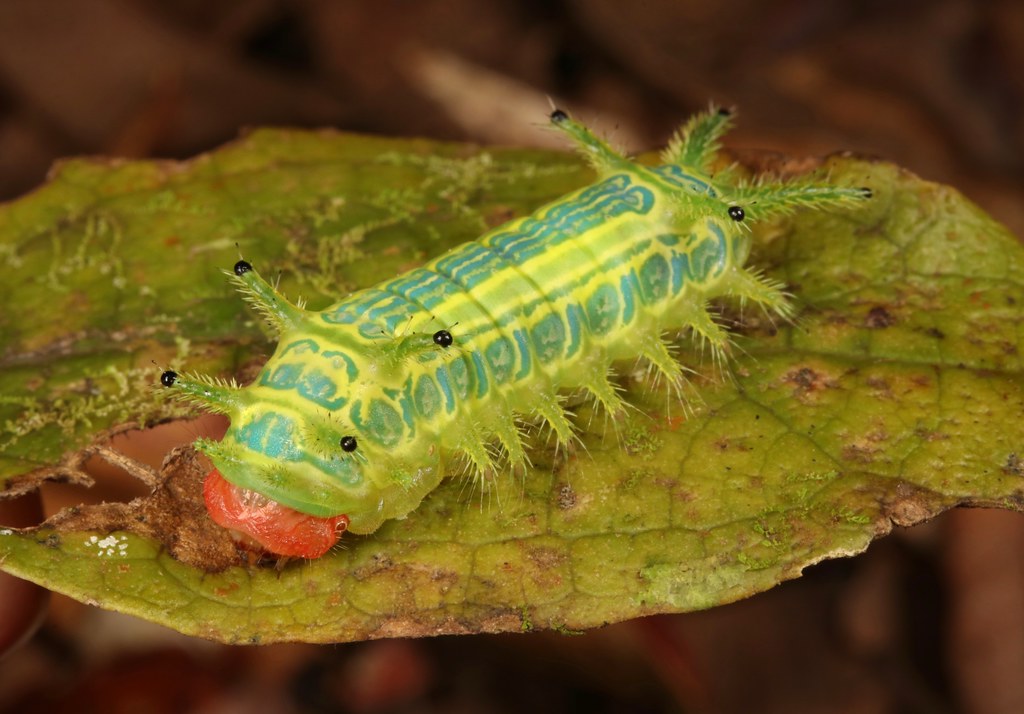
Stinging Nettle Slug Caterpillar (Cup Moth, possibly Hyphorma sp., Limacodidae) "Carrot Top" a
When a puss moth caterpillar rubs or is pressed against skin, venomous hairs become embedded. Envenomation causes intense throbbing pain, burning, and a rash with erythematous spots. More susceptible patients can experience swelling, nausea, abdominal pain, headache, lymphadenopathy, lymphadenitis, shock, and respiratory distress.